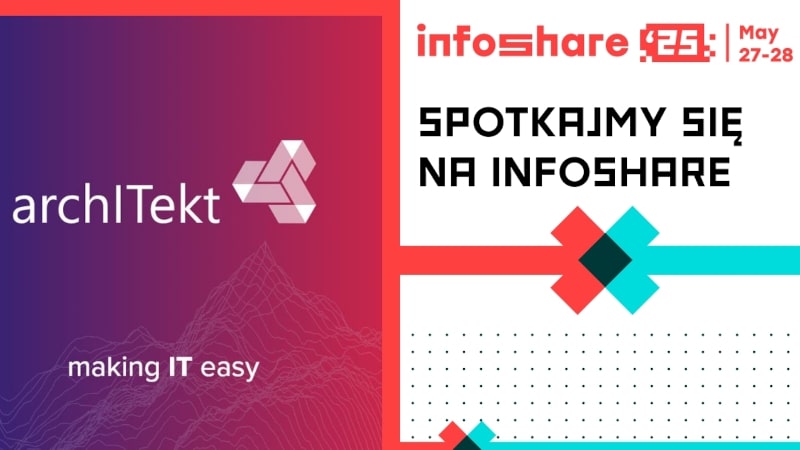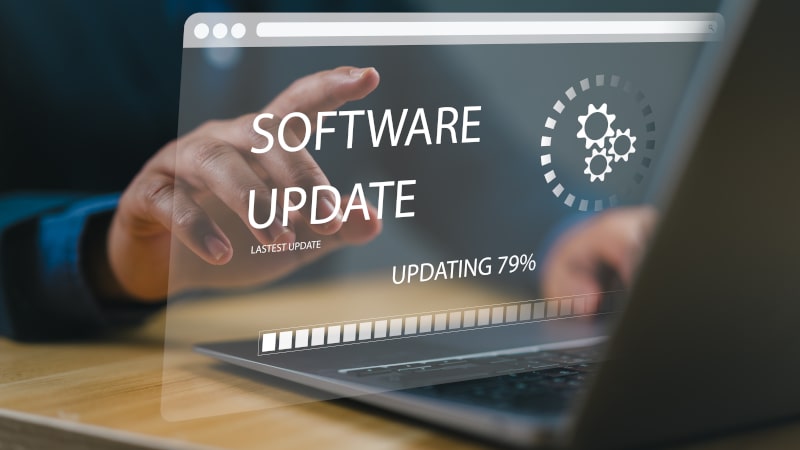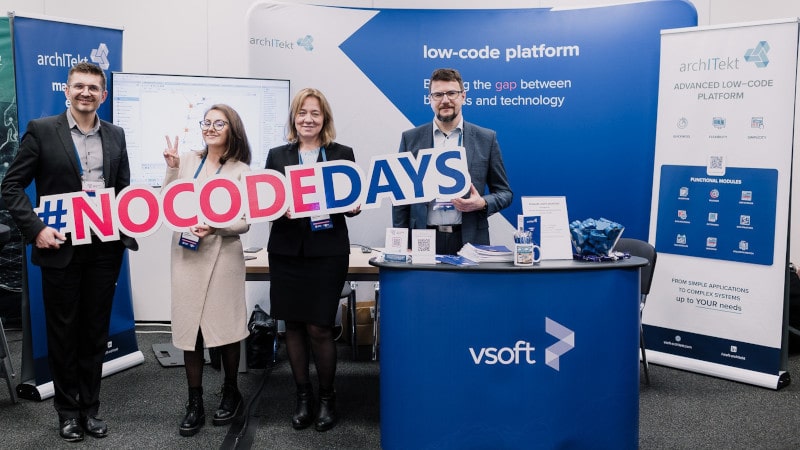We are pleased to announce that we have joined the group of partners of MCSC Hospital Leadership Innovation. This is an important step for us in advancing the digital transformation of healthcare, where technology directly impacts patient safety and quality of care. 🔹What does this partnership mean? As a Silver Partner, we support the development and promotion of innovative medtech solutions. We also bring our expertise and low-code technology, offering our proprietary platform VSoft archITekt. archITekt enables fast creation and expansion of IT systems tailored to the specific needs of hospitals and other healthcare organizations. It allows flexible process adaptation, task automation, and secure, cost-effective data integration. 🔹Why does it matter? MCSC Hospital Leadership Innovation is an international collaboration platform that connects hospitals, startups, investors, and technology leaders to jointly test and implement solutions that improve patient care and streamline hospital operations. ...
Tag: low code
We are proud to announce that VSoft archITekt has become a partner of Infoshare 2025 — the largest technology conference in Central and Eastern Europe, taking place on 27–28 May in Gdańsk at AmberExpo.
This year’s edition will offer a unique combination of technology, business, and the atmosphere of the Baltic coast.Our theme for the event is: “Let IT be easy – keep IT breezy.”We believe software development can be simple, efficient, and accessible — and we will show how to achieve this with archITekt.
Visit Us at Booth C11
What we have prepared for visitors:
Inspiring conversations about low-code technology
Something sweet to start the day well
A contest with prizes
At Infoshare, we will present archITekt — a high-performance low-code platform designed to accelerate business processes and support the creation of enterprise-class systems.This modern, intelligent tool connects IT architecture with real business value. Regardless of industry, archITekt helps teams save time, improve...
Limited access to medical services is one of the greatest challenges facing modern healthcare. Long waiting times, overworked staff, and poor information exchange between facilities often mean that patients wait weeks for diagnosis and treatment.
The key to solving these issues is digitalization — electronic medical records (EMR), telemedicine, and centralized patient data can greatly improve the system’s efficiency. But for these changes to succeed, healthcare needs flexible and fast-to-implement IT solutions.That’s where low-code technology comes in — but how exactly can it help modernize healthcare?
Transforming Healthcare Facilities
According to the World Health Organization (WHO), digital technologies improve the quality and efficiency of medical services. Low-code platforms play an increasingly important role by enabling the rapid deployment of tailored IT solutions.Such systems can integrate disparate applications and scattered data, improving information flow. As a result, physicians can ma...
We are proud to continue our partnership with the Faculty of Geology, Geophysics and Environmental Protection at AGH University of Krakow (WGGIOŚ). Once again, the faculty has entrusted us with supporting the education of its students.This year, our collaboration will expand to include two groups of students participating in the course “Current Issues in Applied Computer Science.” This means even more future IT professionals will have the opportunity to gain valuable, real-world experience.As part of the program, students will receive access to the VSoft archITekt low-code platform — an advanced tool for building modern IT solutions. Together, we will create a dynamic learning environment where participants can combine theory with practice, developing skills that go far beyond the classroom.Using intuitive drag-and-drop techniques, students will learn how to quickly build simple applications as well as design complex, enterprise-class systems. The course will help them master visual application design,...
We are excited to welcome Everest Finanse IT to the network of VSoft SA Partners, joining the group of companies that are driving innovation by building modern systems on the VSoft archITekt low-code platform. This partnership marks another important step in advancing cutting-edge technology within the financial services industry.
The mission of Everest Finanse IT is to deliver software that not only meets but anticipates client expectations — addressing real business needs and market challenges. With its extensive expertise in system design, programming, and integration, the company develops products that combine high functionality with ease of use.
Driving innovation for Bocian Pożyczki
Everest Finanse IT will leverage the archITekt platform to design and develop a new system for the well-known financial brand Bocian Pożyczki.The project sets ambitious goals, focusing on automating key processes and significantly increasing operational efficiency.
Building a Low-Code Competence Center
This is just th...
User and business needs are constantly evolving — and so is our system. The VSoft archITekt platform has been continuously improving for years. 2024 brought breakthrough updates that not only simplify users’ everyday work but also take the application’s aesthetics and ergonomics to an entirely new level. Here are the most important ones:
1. Independent creation of application themes
A new mechanism allows you to define your own application theme directly in the browser. Thanks to a visual editor, you can customize colors, fonts, margins, borders, and other visual aspects of pages and components. The theme is stored in the application’s configuration, making version management easy.
2. Expanded styling capabilities
New options have been added, including:
Custom headers and footers.
Using images as container backgrounds.
Precise control over spacing, margins, and container behavior.
Improved menu customization for mobile devices.
3. UX and web application appearance updatesThe transition to the Kendo ...
We are proud to announce that VSoft SA has become the Strategic Partner of the upcoming NoCodeDays 2024 conference! This is the largest event in Poland bringing together low-code and no-code technology enthusiasts. It offers a unique opportunity to exchange experiences, gain insights, and build connections in the world of innovation. The conference will take place on November 18-19, 2024 in Warsaw, at EXPO XXI. Our team has prepared numerous attractions – two inspiring presentations, a hands-on workshop, and a competition at the VSoft booth with unique prizes! Conference highlights include:Presentations led by VSoft experts Paweł Marchewka and Remigiusz Babicz, who will showcase the capabilities of the low-code platform archITekt for process automation and business operations optimization.A workshop led by Mateusz Wesołowski, guiding attendees step-by-step on how to use archITekt to create algorithms, data structures, and make business decisions – all in an intuitive, graphical interface without any c...
The year 2023 was the year of artificial intelligence. Moving forward is no longer just a choice, but a necessity. So, what awaits us in 2024? Gartner, the undisputed leader in predicting technological changes, presents the Top 10 Strategic Technology Trends for 2024 and the following years. One thing is certain, AI will continue to reign, and enterprises will still be following the path of digital transformation, but who will be the most significant ally on this journey?
Let's take a closer look at the following trends and see which technology will be the driving force of success in 2024.
1. AI TRiSM
Gartner claims that with ubiquitous artificial intelligence, robust defense is necessary. AI TRiSM supports the management of artificial intelligence models, credibility, fairness, reliability, resilience, transparency, and data protection. AI TRiSM is therefore a "knight in shining armor", guarding security.
"By 2026, companies that apply TRiSM controls to AI applications will increase decision-making ...
If you have an idea for an application or system and aim for a swift market entry to gather user feedback promptly, it is worth considering constructing a Minimum Viable Product (MVP) using a Low-Code platform. In this post, we will delve into five reasons why leveraging this innovative methodology in the application development process is advantageous.
What is MVP?
MVP, or Minimum Viable Product, is defined as an application containing the minimum set of features necessary to initiate a business or cater to end-users. Restricting the number of application features is aimed at abbreviating the time required for its launch, often leading to significant cost reductions in deploying the initial application version.
Building software demands increasing flexibility and speed. Consequently, many companies opt to construct a Minimum Viable Product (MVP) using low-code platforms.
Why Develop MVP with Low Code?
1. Time and Cost Efficiency
Utilizing a low-code platform enables the efficient and rapid creation o...
Picture a world where your development teams can rapidly and flexibly create robust applications, freeing up resources to focus on high-priority initiatives. With low code, this vision becomes a reality. In this article, we will explore why low-code platforms have become an essential investment for modern Chief Information Officers (CIOs).
Advantages of Implementing Low-Code
CIOs have long struggled with project delays, limited budgets, extended time to market, and a lack of business flexibility. It's no surprise that they are increasingly seeking solutions that enable them to keep pace with the demands of the business. Here are five reasons why embracing low code is crucial for streamlining your company's digital transformation.
Accelerated Development: Visual techniques and DevOps automation allow for much faster delivery of comprehensive solutions. Intuitive visual interfaces, pre-built components, and drag-and-drop functionality shorten development schedules from months to weeks or even days. This ag...









